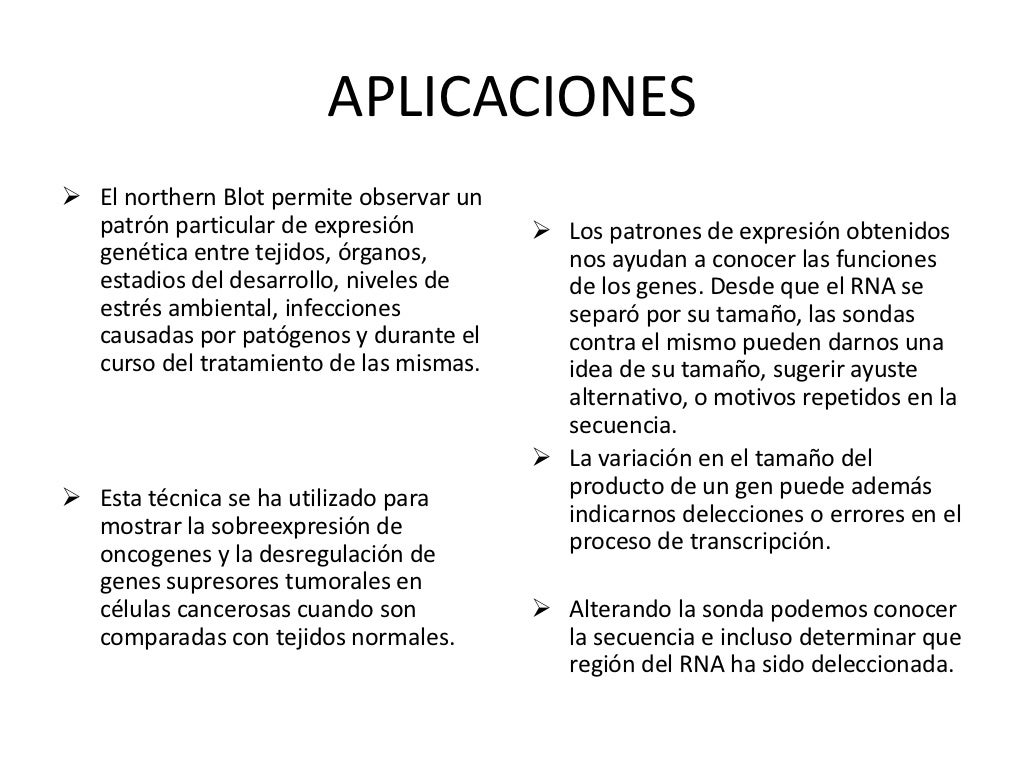

The hybrid signals are then detected by X-ray film and can be quantified by densitometry. The membrane is washed to ensure that the probe has bound specifically and to avoid background signals from arising. Experimental conditions that can affect the efficiency and specificity of hybridization include ionic strength, viscosity, duplex length, mismatched base pairs, and base composition. After a probe has been labeled, it is hybridized to the RNA on the membrane. Once the RNA has been transferred to the membrane, it is immobilized through covalent linkage to the membrane by UV light or heat. Buffer transfer by capillary action from a region of high water potential to a region of low water potential (usually filter paper and paper tissues) is then used to move the RNA from the gel on to the membrane ion exchange interactions bind the RNA to the membrane due to negative charge of the RNA and positive charge of the membrane. The transfer buffer used for the blotting usually contains formamide because it lowers the annealing temperature of the probe-RNA interaction, thus preventing RNA degradation by high temperatures. Pressure is applied evenly to the gel (either using suction, or by placing a stack of paper towels and a weight on top of the membrane and gel), to ensure good and even contact between gel and membrane. In the Northern blotting, RNA fragments are treated with formaldehyde to ensure linear conformation.Ī sheet of nitrocellulose (or, alternatively, nylon) membrane is placed on top of (or below, depending on the direction of the transfer) the gel. Products for Transferring to Solid Support and ImmobilizationIn the Southern blotting, DNA fragments are denatured with alkaline solution. Please note that nitrocellulose membranes are chemically incompatible with the NorthernMax Transfer Buffer and should not be used with these kits. The NorthernMax and NorthernMax-Gly Kits have been optimized to work with the BrightStar-Plus positively charged nylon membranes, and we recommend their use to minimize background and maximize signal. Instead of overnight transfer, the transfer takes about 2 hours and delivers higher blot sensitivity by efficiently moving RNA (especially larger transcripts) onto the membrane. With dry blotting, there is no need for additional buffer or liquids that can introduce variability into the result.Īlternatively, we offer a rapid alkaline transfer method that is incorporated into the NorthernMax and NorthernMax-Gly procedure. For fast, reproducible transfer, the iBlot Dry Blotting System offers complete transfer of RNA to nylon membrane typically in 7 minutes. Once separated by denaturing agarose gel electrophoresis, the RNA is transferred to a positively charged nylon membrane and immobilized for subsequent hybridization. Transfer to Solid Support and Immobilization View our RNA Isolation Kit Selection Guide TRIzol® Max™ Bacteria/Yeastl RNA Isolation Kit
NORTHERN BLOT ANALYSIS PRO
PureLink® Pro 96 Viral RNA/DNA Purification Kit PureLink® Pro 96 Total RNA Purification Kit MELT™ Total Nucleic Acid Isolation System MagMAX™-96 for Microarrays Total RNA Isolation Kit RecoverAll™ Total Nucleic Acid Isolation Kit for FFPE


 0 kommentar(er)
0 kommentar(er)
